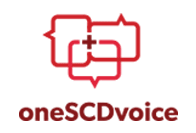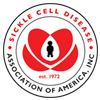Trusted Resources: Evidence & Education
Scientific literature and patient education texts
Sickle Cell Disease: A Review of Nonpharmacological Approaches for Pain
source: Journal of Pain and Symptom Management
year: 2016
authors: Williams H, Tanabe P
summary/abstract:CONTEXT:
Sickle cell disease (SCD) is a life-threatening condition that affects more than seven million people worldwide. The most common complication experienced by persons living with SCD is pain. Evidence supports the use of nonpharmacologic therapies in managing psychological and social complications of pain in persons with SCD, but there is little consensus if these approaches can also be applied for the treatment of pain in SCD.
OBJECTIVES:
To describe and synthesize the use of nonpharmacological therapies for reducing pain of any type and origin in persons with SCD.
METHODS:
A literature search was conducted using PsycINFO, PsycARTICLES, PubMed, CINAHL, and Embase. Databases were searched using the following terms: sickle cell, pain, and nonpharmacological therapies. Interventions were graded for methodological quality and categorized as 1) peer-support group therapies, 2) educational/psychological therapies, and 3) skill-based therapies.
RESULTS:
Twenty-eight nonpharmacological interventions for persons with SCD were examined. Of these studies, a wide variety of nonpharmacological interventions were tested. Twelve studies yielded significant improvements in pain, three studies reported no positive effect or differences between experimental and control conditions on pain or a pain-related outcome, and one study reported a negative or detrimental intervention effect.
CONCLUSION:
Approximately half of the studies reviewed demonstrated success in alleviating pain, suggesting that patients are able to use nonpharmacological interventions to reduce pain with some degree of success. Questions still remain regarding the efficacy and generalizability of these interventions for persons with SCD.
DOI: 10.1016/j.jpainsymman.2015.10.017
read more full text
Related Content
-
HydroxyureaHydroxyurea (Hydrea) is used alone or wi...
-
Prevention of acute chest syndrome by implementing a standardized process to improve incentive spirometry use in hos...Acute chest syndrome (ACS) is the second...
-
Pain Criseshttp://68.media.tumblr.com/c7875137ded96...
-
Long-term opioids may not be best pain management option for all sickle cell patientsSmall study shows some on opioids report...
-
Living With Sickle Cell Disease Is a Constant Battle With Pain, According to one Woman Who Has It“You don’t look sick.” That’s ...
-
Isaac Singleton: Sickle Cell Freehttps://www.youtube.com/watch?v=a5mMgnuz...
-
Older Blood Used in Transfusions May Be Harmful to Adult Sickle Cell Patients, Review FindsIn an analysis of adults with sickle cel...
To improve your experience on this site, we use cookies. This includes cookies essential for the basic functioning of our website, cookies for analytics purposes, and cookies enabling us to personalize site content. By clicking on 'Accept' or any content on this site, you agree that cookies can be placed. You may adjust your browser's cookie settings to suit your preferences. More Information
The cookie settings on this website are set to "allow cookies" to give you the best browsing experience possible. If you continue to use this website without changing your cookie settings or you click "Accept" below then you are consenting to this.




 +myBinder
+myBinder
